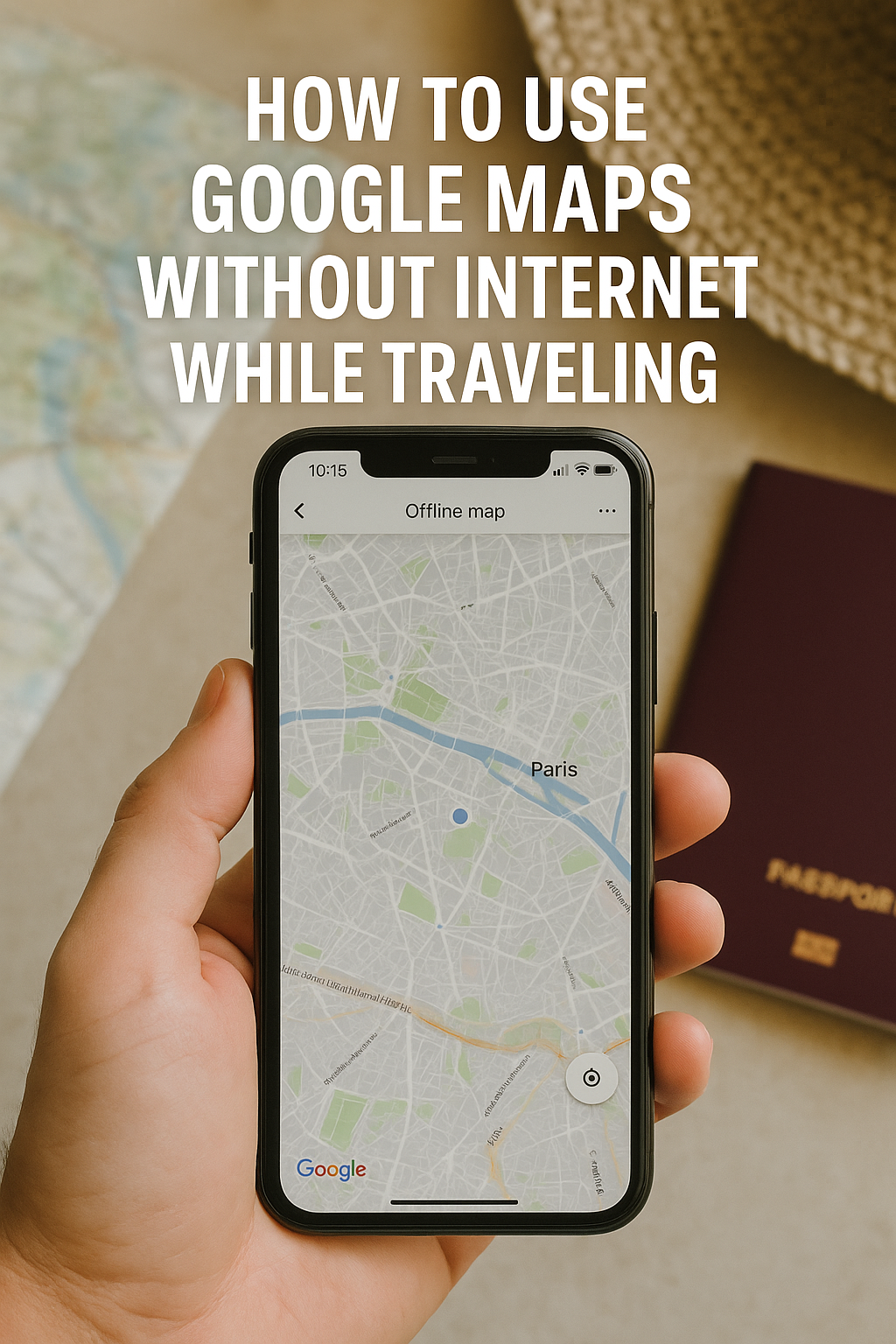Introduction:
Traveling without internet might sound impossible in 2025 — but it’s more common than you think. Whether you’re landing in a new country without a local SIM, hiking in a remote area, or trying to avoid costly roaming fees, being able to use navigation tools without an internet connection is essential. Fortunately, Google Maps offers powerful offline features that every traveler should know. In this guide, you’ll learn how to set up and use Google Maps offline, avoid common mistakes, and unlock pro-level tips that will help you travel smarter, safer, and stress-free.
Why You Need Google Maps Offline in 2025
Even with 5G and eSIMs becoming more available, travelers still face connectivity gaps due to:
- Airport or in-flight mode immediately after arrival
- Remote areas with no cell signal
- Expensive roaming data fees
- Delays in purchasing or activating local SIM cards
- Battery-saving mode limiting background data usage
Using Google Maps offline solves these problems and ensures that you can navigate confidently anytime, anywhere.
Step-by-Step: How to Download Google Maps for Offline Use
1. Open the Google Maps App
Make sure you’re signed in to your Google account.
2. Search for Your Destination
Search for a city, town, or region. For example: “Barcelona, Spain”.
3. Tap on the Location Name
Once the map loads, tap on the name at the bottom of the screen to expand the location info.
4. Tap “Download”
You’ll see a “Download” button. Tap it and select the area to download. You can zoom in or out to adjust the region.
5. Wait for the Download
The map will begin downloading. Make sure you’re on Wi-Fi to save mobile data.
What You Can Do Offline with Google Maps
Once your map is downloaded, you can:
- Search for locations (hotels, restaurants, landmarks)
- Get turn-by-turn driving directions
- Use GPS to track your location
- Bookmark places like your hotel or attractions
- View opening hours and phone numbers (if cached beforehand)
Note: Real-time traffic updates, walking directions, public transport data, and user reviews may be unavailable offline.
Pro Tips: Maximize Your Offline Map Experience
Download Before You Leave
Don’t wait until you’re already offline! Download maps while still connected to strong Wi-Fi at home or your hotel.
Use Airplane Mode + Wi-Fi
When you arrive in a new country, use airplane mode with Wi-Fi enabled. You can still use Google Maps offline without risking roaming charges.
Label Key Locations
Before going offline, star or label important places such as your hotel, embassy, airport, train station, and favorite cafes.
Set up “Your Places”
Create custom lists in “Your Places” on Google Maps to organize your trip itinerary.
Update Maps Regularly
Offline maps expire after about 1 year. Google will send you reminders to update them — don’t ignore these!
Real-World Scenarios
Airport Arrival Without Data
You land in Istanbul with no local SIM. Thanks to your offline map, you locate the airport shuttle stop and track your hotel location by GPS.
Remote Mountain Hiking
In the Swiss Alps, there’s no cell service — but your offline map shows the trail, nearby shelters, and even estimated hiking times.
Nighttime in a New City
You’re walking back to your Airbnb in Seoul after dinner. The offline map shows your route without needing data or draining your battery with constant network search.
Advantages Over Other Navigation Apps
While apps like Apple Maps and HERE WeGo also offer offline options, Google Maps has the largest global database, better accuracy, and more detailed place information. It also integrates with Google Travel, Calendar, and Gmail, making it a powerful ecosystem tool for frequent travelers.
Safety Tip: Combine Google Maps with Other Tools
- Use Google Translate offline for reading signs or asking for directions
- Download city guides from Google Travel or Google Docs
- Carry a power bank so your GPS doesn’t die halfway through your trip
- Take a screenshot of key addresses just in case
Best Travel Types for Offline Google Maps
| Traveler Type | Benefit of Offline Maps |
|---|---|
| Backpackers | Avoid roaming fees and unreliable hostel Wi-Fi |
| Digital Nomads | Navigate in coworking cities without draining mobile data |
| Business Travelers | Always know your meeting locations, even in transit |
| Solo Female Travelers | Safely navigate unfamiliar areas even late at night |
| Family Travelers | Keep kids occupied while still accessing directions offline |
Final Thoughts:
Using Google Maps offline isn’t just a backup plan — it’s a smart travel strategy. It keeps you independent, helps avoid costly mistakes, and ensures you’re never truly lost. In 2025, this feature is more powerful than ever, and mastering it is essential for any serious traveler.
Don’t rely on the internet. Travel smarter. Download your maps, and take the world with you — even when you’re offline.
